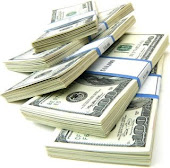
1. Power button default action
Speed Up Your PC Easily Scan, Repair and Fix Errors Speed & Optimize PC, Free Download
The default action for the Power button on the start menu in Windows Vista is Sleep, which isn’t necessarily useful for everybody. You can configure this setting easily by using the advanced power settings panel, which is a little tricky to get to normally, but we’ll take the shortcut. Open a command prompt (type cmd into the start menu search bar), and then type in the following: powercfg.cpl,1. You could also take the long route (Control Panel Power Options Change Plan Settings Change Advanced Power Settings) Once you get to this dialog, browse down as shown to “Power buttons and lid”
From here, you can change the options:
Power button action - Changes the hardware power button action
Start menu power button - Changes the power button on the Start Menu
You can change the power button to either Sleep, Hibernate or Shut Down, or even nothing for the hardware power button.
2. Hide Desktop Icon Text on Windows Vista
Some icons are just obvious enough that nobody should need text below them to tell them what the icon is for. A good example of this is the icon for Internet Explorer. We’re all really used to it by now, and the text just makes it ugly. Just right-click on the shortcut, and choose Rename. Now hold down the Alt key and type in 255 on the keypad to the right of the keyboard. You can’t use the number keys right above the keyboard, they won’t work. If you have a laptop, you can turn on numlock and then use the little number keys next to the regular letters. (You know you always wondered what they were for)
For the first shortcut on the desktop, a simple Alt+255 will do. For the next shortcut, you’ll have to enter the combination twice (Alt+255, Alt+255). For the third, 3 times… you get the idea. The way this works is that the Alt+255 character is blank, so the shortcut filename is actually just named with a character that is completely blank. Since you can’t have two shortcuts or files named the exact same thing, the second shortcut will have to be named with two blank characters.
Now we have a sweet looking icon on the desktop, with no bothersome text beneath it. If you use this tip to rename a folder, you will not be able to rename the folder back using the right-click rename. I’m not sure why this is. What you’ll have to do is open a command prompt and change directory into the containing folder (For instance, the desktop folder), and run this command: ren “Alt+255” “NewFolderName” You will need to actually type the Alt+255 characters where illustrated in the command. It will appear as a space. Note that the Recycle Bin icon won’t work this way.
3. Enable Hidden BootScreen in Windows Vista
The Windows Vista BootScreen is pointless, but Microsoft decided to hide a more visually appealing boot screen that can easily be enabled with very little trouble. I’m not sure why they didn’t make the boot screen better.
1) Press Win+R, type msconfig and press Enter.
2) If User Account Control prompts you to allow the action, click on Continue.
3) In the "System Configuration" window, click on the Boot tab.
4) Select your Windows Vista installation and under "Boot options", check "No GUI boot". Press OK.
5) In the dialog that appears, check "Don’t show this message again", and then click on Restart.
6) Your computer will now reboot, and you will see the Aurora boot screen with text that says "Starting Windows Vista".
Note: You may get a Windows Defender error on the next startup. You can enable the system config utility using the tray icon and this error will go away.
4. Fix for COM Surrogate Has Stopped Working Error in Vista
If you’ve been getting the error COM Surrogate has stopped working whenever you browse folders containing Divx avi files, it looks like the latest Divx update to codec version 6.5 fixes the issue, but it also seems to remove the thumbnails. If you want to upgrade, just use the divx update checker to grab the new version. Looks like it’s finally fixed, at least the error message is now gone, although I really wish they would have just gotten the thumbnails working instead.
If you are using Nero, you will need to update to version 7.7.5.1 to fix the problem. I think this is the source of the error for most people.
If you’ve upgraded Nero and Divx and still have the problem, you can try renaming the file C:Program FilesCommon FilesAheadDSFilterNeVideo.ax to NeVideo.ax.bak This will break Nero Showtime, however.
5. Stop an Application from Running at Startup in Windows Vista
Back in the old days, there were a lot of places an application could hook itself to run at startup. You had to check the registry in more than one place, as well as your start menu. With Windows Vista, there’s a built-in panel that handles all that for you. To quickly get to this panel, you can open Control Panel, and then type “startup” into the search box. The link for “Stop a program from running at startup” shows up immediately. You could have also opened Windows Defender and fooled around with the menus until you find the right spot, but this seems quicker to me. Now you can see the Windows Defender screen that lets you manage the startup programs. You can choose to Remove or just Disable any startup item using this panel, as well as lots of other useful information so that you can see what each item is.
6. Emptying Windows Vista Temp Files Directory
Windows Vista Disk Cleanup wizard is really not all that bad, but I did find a small problem with it… It doesn’t fully empty your temp folder. It only allows you to delete temporary files that haven’t been modified in a week. If you’ve recently done a lot of editing or something that generates large temporary files, you may want to manually clean up. Just type in %TEMP% into the start menu search box, and hit enter. You’ll immediate be taken to the temporary files folder, where you can delete whatever you feel like.
7. Disable User Account Control(UAC) For Administrators Only
If you can’t stand the User Account Control prompts, but you’d still like to retain a little bit of security, you can disable it for Administrator accounts only. What we’ll be doing is actually changing Windows Vista to automatically elevate the privilege level for administrators without prompting. The nice thing about doing it this way is that regular users as well as Internet Explorer still run as regular users, and would still use the normal security mechanisms. To configure this setting on Windows Vista Business and Ultimate, you can use the Local Security Policy configuration.
Speed Up Your PC Easily Scan, Repair and Fix Errors Speed & Optimize PC, Free Download
Just type in secpol.msc into the Start menu search box and hit enter.
Now browse down to Local Policies Security Options
Find the following in the list: “User Account Control: Behavior of the elevation prompt for administrators in Admin Approval Mode” and double-click on it.
Change the setting to “Elevate without prompting”. You should be all done.
This is an easier method that you can use to do the same thing from the GUI interface.
Open up Control Panel, and type in user account into the search box.
You’ll see the link for “Turn User Account Control (UAC) on or off”. Click it.
Uncheck the box, and reboot your computer. You should be done with obnoxious prompts!
8. Using Windows Vista System Restore
Windows Vista has a feature called System Restore that automatically backs up registry and system files whenever you install new software or drivers. This feature is useful when you install evil software that makes your computer run really slow. But don’t worry, System Restore won’t remove Windows Vista.
Using System Restore in Windows Vista
There are two places that you can use the system restore feature from. From within Windows, you can just type restore into the Start menu search box, and you’ll immediately see System Restore at the top of the start menu, or you can type rstrui into the search box and hit enter. Your choice. You will immediate see a screen where you can choose to roll back the system to the last restore point. You can select “Recommended restore”, and just click next, or you can choose a different restore point. If you do choose a different restore point, you will see a list of restore points that you can choose from. Click one of them, and you will have to confirm and then restart your computer to roll the system back. If your system won’t boot If you can’t even get into windows, you can boot off the installation dvd, and choose the “Repair your computer” option on the lower left hand side. Click next on the next screen. Now choose System Restore from the System Recovery dialog. It will take a few seconds to come up, and you will see the same screen that you would see in Windows. Click next, and on the next screen select the drive that your copy of Windows Vista is installed on. Click Finish, and Vista will roll back to the previous restore point. Really pretty simple stuff. I absolutely recommend keeping the system restore feature on in Vista !
9. Verify the Integrity of Windows Vista System Files
Windows Vista includes a utility that will scan your system for corrupt, changed or missing system files. Running this from the command prompt is much easier than booting off the dvd into repair mode. To run this utility, you will need to open a command prompt in administrator mode. You can do that by right clicking the Command Prompt in the list and choose "Run as Administrator" Once you have an administrator command prompt open, you can run the utility by using the following syntax: SFC [/SCANNOW] [/VERIFYONLY] [/SCANFILE=] [/VERIFYFILE=] [/OFFWINDIR= /OFFBOOTDIR=] The most useful command is just to scan immediately, which will scan and attempt to repair any files that are changed or corrupted. You can run that command with this command: sfc /scannow
10. Disable Hibernation & delete the Hibernation file
Windows places a file on your hard drive that it uses when your computer goes into hibernation mode. If you do not use hibernation mode, or your computer does not properly support it, you may want to disable hibernation and clear the file off your hard drive to free up some space (the file will use as much space as you have in physical memory, so if you have 1GB of RAM, it’s going to use 1GB of your hard drive space).
Disable Hibernation:
1. Click Start, All Programs, and then right click on "Command Prompt".
2. From the context menu click on "Run as administrator".
3. If User Account Control prompts you to allow the action, click on Continue.
4. In the command prompt window, type "powercfg –h off" (without the quotes).
5. Close the Command Prompt window.
Delete the Hibernation File:
1. Click Start, All Programs, Accessories, System Tools, and then click "Disk Cleanup".
2. If prompted to choose a drive, select the drive in which Windows Vista is installed on to and press OK.
3. Disk Cleanup will scan the hard drive and present you with a list of options.
4. Check "Hibernation File Cleaner", and then click OK.
5. When asked "Are you sure you want to permanently delete these files?" click on the Delete Files button .
Read more...































